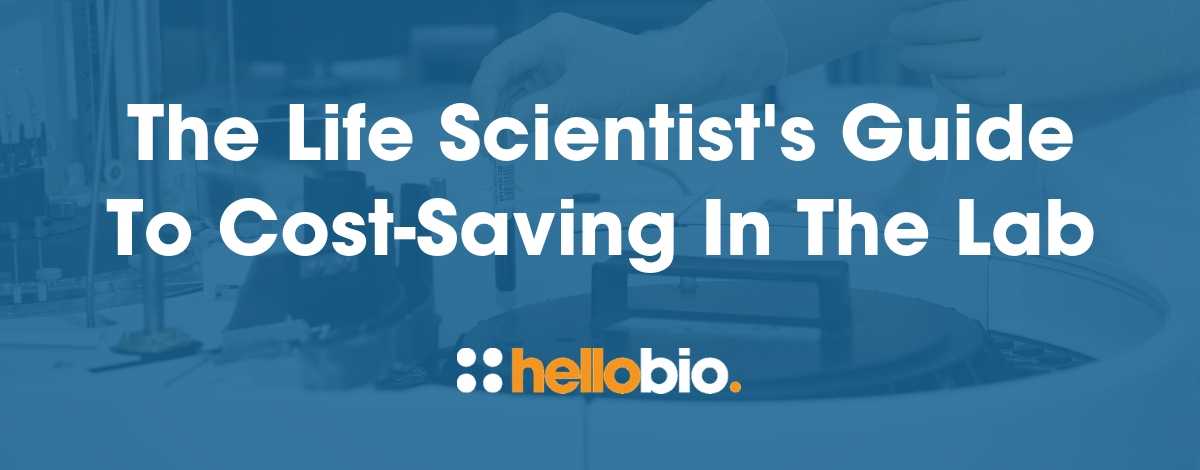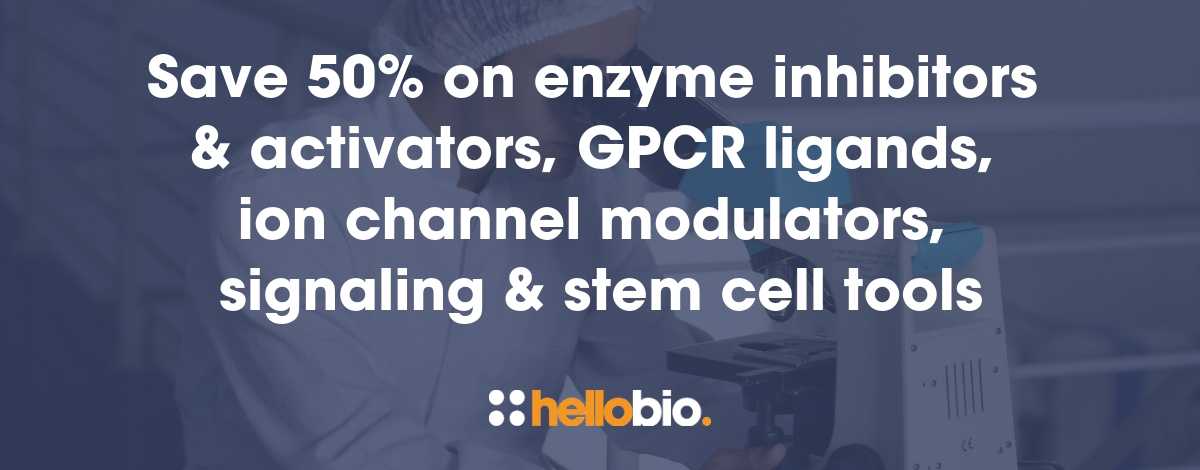The Life Scientist’s Guide To Promoting Yourself and Your Work
Promoting yourself and your work is an important part of any life scientists’ career, but that doesn’t mean it’s always easy.
You may struggle with self promotion for a number of reasons — lack of confidence, imposter syndrome, not knowing where to start or how far to go. We get it. Putting yourself out there can feel intimidating. Once you get over whatever blocks you may have, it can also be extremely rewarding.
To help get you started, we’ve put together The Life Scientist's Guide to Promoting Yourself and Your Work. We hope it gives you the tools and know-how to get your research heard, and the confidence to get out there and share your brilliance.
Get Over your ‘Marketing Block’
We’ve talked to many life scientists around the world, all of whom are doing incredible things, yet many are doing them quietly. They aren’t using social media or other marketing tools to shout about the breakthroughs they’ve had, and we wanted to know why.
It seems scientists have been warned of the dangers of self-promotion for some time. This has created a culture of concern — will it get annoying? What will their colleagues think? Will it come across as inappropriate to senior scientists?

Academia has, for a long time, been a traditional institution with a specific, and rigid, way of doing things. As technology progresses and we have the ability to connect, share and engage with people like never before, this is changing. Scientists are more often using marketing methods to further their careers, and for good reason.
“In today’s world, it’s not only pursuing science, but communicating about it effectively that’s important. I completed my PhD a year ago, and throughout that time I learnt a lot about science communication. In fact, I still keep learning. And I cannot emphasize enough how important it has proven to be in my career – not just for myself, but for others too.” - Dr. Chinmaya Sadangi
Before we dive into how you can get your work seen more widely, here are a few key points to help you get over any marketing blocks you may be experiencing:
- Self-promotion actually means promotion of your work. Take the self out of there entirely and you’ll already start to feel more at ease. You’re passionate about what you do, it’s important, and will have a significant impact on people’s lives. It deserves to be acknowledged.
- Through promoting your work, you’re simply telling the world something they will benefit from hearing. That’s important.
- Use your platform to talk about and engage with people in your field. When you encourage and promote other life scientists’ work, you’ll start to feel like your efforts are contributing to a wider conversation and are less about ‘me, me, me’.
- Look for opportunities to collaborate and co-promote. This will give you a sense of contribution within the science community.
So, now we know why you should promote your work, let’s take a look at the what and the how.
Focus on Building Confidence
Often, what stands in the way of us promoting ourselves and the great work we do is a lack of confidence.
Instead of proudly announcing your latest findings to your community and beyond, a lack of confidence can have you doubting yourself, worrying about what people will think, and subsequently hiding away in your lab. If you’re anything like us, you’ll be all to familiar with imposter syndrome too - the little voice in your head that whispers, “who do you think you are? You can’t do this!”
When that happens, it’s time to work on your confidence.

Celebrate the little things
Start by celebrating the little things. Take note of all your achievements and the positive feedback you get throughout the week. When in doubt, ask your support networks for a little boost - after all, that’s what they’re there for.
In her article, The most common PhD problems and how to get past them, Lizzie Mann told us: “Imposter syndrome affects almost everyone at some point. Some of the most capable and intelligent people I’ve met in academia frequently (and maddeningly) worry that they’re inferior to their peers.
It doesn’t matter what your project is, or what your background was – chances are that you made it to your current position for a reason...Remind yourself of your triumphs: a great poster session, a teaching prize, how quickly you were able to learn or fix that technique.”
Be aware of how you talk to yourself
How we talk to ourselves has a huge impact on how we present ourselves to the world. After all, you’ll never speak to anyone as much as you speak to yourself -- are you being kind in that dialogue, or critical and harsh?
Get into the habit of repeating positive statements to yourself like, “you can do this” and “you’re doing great”. Positive self-affirmations activate brain systems associated with self-related processing and reward. This means you’ll be more able to navigate difficult times, and more confident in celebrating successes.
According to a study by Cascio, O’Donnell et al “Self-affirmations remind individuals of psychosocial resources that extend beyond a specific threat, which allows them to focus on sources of positive self-worth that transcends the threat. This in turn is thought to reduce reactivity to the threat and protect overall psychological wellbeing.”
Get on Social Media
Using social media to promote yourself is one of the best tools life scientists can add to their arsenal. The life science community is incredibly active online, especially on Twitter. Over the past year or so, we’ve dived in, and we’ve loved getting to know our wonderful community of PhDs, postdocs, and professors. This is a place to promote yourself, as well as a great source of knowledge and support.
If you haven’t already, set yourself up with a Twitter account. It’s best to use your real name as your username (or as close to it as you can get) and set a clear, high quality photo of yourself that shows what you do as your profile picture. You might want to use an image of yourself in the lab, or presenting at a conference or seminar.
When it comes to writing your bio, include what your PhD is (or was) in, where you’re studying, and any additional areas of interest you have -- these might be complementary to your research, such as championing diversity in life science, or something fun like baking that you’d also like to tweet about. We all love a bit of Bake Off, right? What matters is that you show your personality and expertise as best you can in those 160 characters.
So, now you’re set up, what do you Tweet about? You could try uploading photos or videos of your experiments, announcing any publications, sharing news articles about breakthroughs in your research area, re-tweeting your colleagues’ achievements, letting people know which conferences you’re attending, and sharing news from your lab… the list of possibilities goes on!
Great hashtags to get involved in -- both for inspiration and to find people to follow -- are #phdchat, #phdlife, and #academictwitter. Follow other scientists in your field of research, talk to them, ask them questions, and let them know what you’re up to.
Another great social media platform for career boosting is LinkedIn. This is so much more than just a place to upload your CV online.
As with Twitter, it’s best to use a professional profile picture in which your face is clear. Preferably, use the same picture on each channel so that people can easily recognise you.
You can share the same types of content here as you would on Twitter, with the added opportunity to build your network based on people's’ job titles, companies, and organisations. LinkedIn can be a hugely powerful tool for getting your name known by influential people, whether that’s by talking to them privately via messenger or interacting in relevant industry groups.
Become a Science Communicator
In his recent guest post, The Importance of Science Communication, Dr Chinmaya Sadangi explained: “Communicating about science, online and ‘out there’ in world, and in doing so lifting the visibility of the science community, is vital. Arguably now, more than ever.”
Being a science communicator means looking for opportunities to discuss your work in publications and blogs that are available to the general public, not just the science community.
This will get your work in front of wider audiences and will help more people to understand the value of the research you’re doing. After all, life science directly relates to people, so it stands to reason they will want to hear about it.
As Dr Sadangi said: “Establishing your presence in the science communication world has numerous benefits: enhancing your career, building networks, increasing your knowledge portfolio, and spreading the reach of your work beyond your colleagues.”
Network, Network, Network
It’s been said a hundred times but this one is so important it’s worth saying again. Attend as many conferences and events as you can muster (without burning yourself out).
Dr Sadangi told us: “I would highly encourage everyone to make the effort to regularly attend conferences, seminars, and workshops. Here, you can collaborate and engage with other scientists, professors, corporates, and science communicators.
“This will not only give you more confidence in your ability to communicate, but will help you build great networking skills. This practice will definitely open up a lot of career opportunities too.”
Start small and work your way up
We totally understand the dread many people feel at the mere mention of the word “networking”. Even if you’re a social butterfly, introducing yourself to a Nobel prize winner can feel daunting, but you don’t have to go that far that quickly. Identify postdocs you admire to speak to instead, and acclimatise yourself that way.
The same applies for the size of the conferences you’re attending. You have a much better chance of meeting influential people at more intimate events. Start small and work your way up. Identify six conferences you’d like to attend in a year. At least one of these should be a bigger event, but you can leave this to the end of the year once you’ve had some practise. After you attend each one, write down some successes and lessons, and a list of the people you spoke to. By the end of the year, you’ll be able to review everything you’ve learnt and see how your confidence has grown.
Be targeted
If you can get hold of the guest list ahead of attending a conference or seminar, make a list of those you most want to speak to, and make it your mission to introduce yourself to as many people on that list as possible during the event.
After the event, send a personal follow up email to those you connected with. Tell them you enjoyed meeting them and, if appropriate, arrange a coffee and informal chat. Go into this with the mindset of making friends and sharing ideas, rather than specifically promoting yourself and your work. You never know where these conversations could take you.
Use social media to connect at conferences
As we’ve already discussed, social media is a fantastic tool for connecting and engaging with your peers. Most events will have their own hashtag, so you can use this to follow, and even get involved in, the conversation. For example, if you’re attending this year’s SfN Annual Meeting, get using the hashtag SfN18.

You can take this even further. As Dr Emma Yhnell advised: “Before and during conferences, you can reach out to presenters and ask them questions about their talk or poster presentation”. You could even build these questions out further into a blog or article, which put the speaker in the spotlight.
The more you talk about what other people are doing, the more engaging you will be and the more comfortable you’ll feel when it comes to promoting your own work. It may help to follow a 2:1 ratio -- for every one self-promotion post you put out on your networks, make sure you post two that are championing someone else.
Speak publicly as often as you can
Speaking publicly about your research is one of the best ways to promote yourself and your work. Look for opportunities to do poster or oral presentations at conferences or meetings. Again, you may want to start small and work your way up. The more you get used to talking about your research in public, the more natural it will become - you may even start to enjoy it!
In Tips For Poster Presentations at Scientific at Scientific Meetings and Conferences, Nina Lichtenberg wrote: “The simplest way to find poster presentation opportunities at conferences and meetings is to browse the conference organisation’s website for calls for abstracts. There’s typically a poster presentation session at most scientific conferences, both large and small.
“Abstract acceptances are often relatively non-competitive, but this is largely dependent on the size and scope of the meeting. Word of mouth is also powerful. Ask your fellow graduate students, lab mates, and professors for good poster sessions taking place at upcoming conferences they know of.”
Get Contributing
Look for opportunities to contribute to blogs and industry magazines. This could either be in the form of an article you write yourself, an interview, or a wider study where you offer a quote or piece of insight. If you’re still feeling a little underconfident, collaborate with others in your field and write something together. This will help take some of the pressure off.
There are a number of ways life scientists can find writing opportunities:
- Search on Twitter for the hashtag #journorequest plus “scientist”, or the hashtag of your specific discipline, such as #neuroscience and reach out to any journalists looking for contribution
- Send pitch ideas to editors focusing on a topic you are passionate about or have based your research around
- Look out for news articles in national press that you have a strong opinion on. Then reach out to the journalist who wrote the piece and offer to give your expert comment to continue the story.
- Identify publications you’d love to be featured in and get in touch with their editors to introduce yourself and state your interest. You never know what can come from a simple introduction.
Be Loud and Proud
Remember, promoting yourself and your work isn’t about gloating or being vain. It’s about taking pride in your work and communicating your findings and processes with those that want to, or need to, hear about them. It’s bridging the gap between the science community and the rest of the world in a way that is accessible and inclusive.
Be proud of the work you are doing and take every opportunity you can to talk about it. You’ll be amazed at the opportunities that present themselves when you move past your blocks and start to put yourself out there.
_______________________________
If you enjoyed reading this article, why not check out the other resources available on our blog. One of the things we’re most passionate about is supporting early career life scientists and PhD students. We know how tough it is - so we hope you find these helpful!
Advice & guidance for life scientists
Click below to view our essential guides and articles to support life scientists, PhD students & early career life scientists:
Travel grants
Every month we give away $500 to PhD students and Postdocs so that they can attend a scientific conference - click below to find out more:
Wellbeing for scientists
Click below for our resources to help improve your wellbeing:
Technical resources
Try our Molarity Calculator: a quick and easy way to calculate the mass, volume or concentration required for making a solution.
Try our Dilution Calculator: an easy way to work out how to dilute stock solutions of known concentrations
Click below to see our Mini-reviews, Pathway Posters & Product Guides: a set of technical resources to answer your questions on a wide range of topics and to help you get started quickly.
And - when you get to the stage of planning your experiments, don't forget that we offer a range of agonists, antagonists, inhibitors, activators, antibodies and fluorescent tools at up to half the price of other suppliers - click below to see how we compare with other suppliers:
Advice from your fellow scientists
Click below to read advice from other scientists:






















